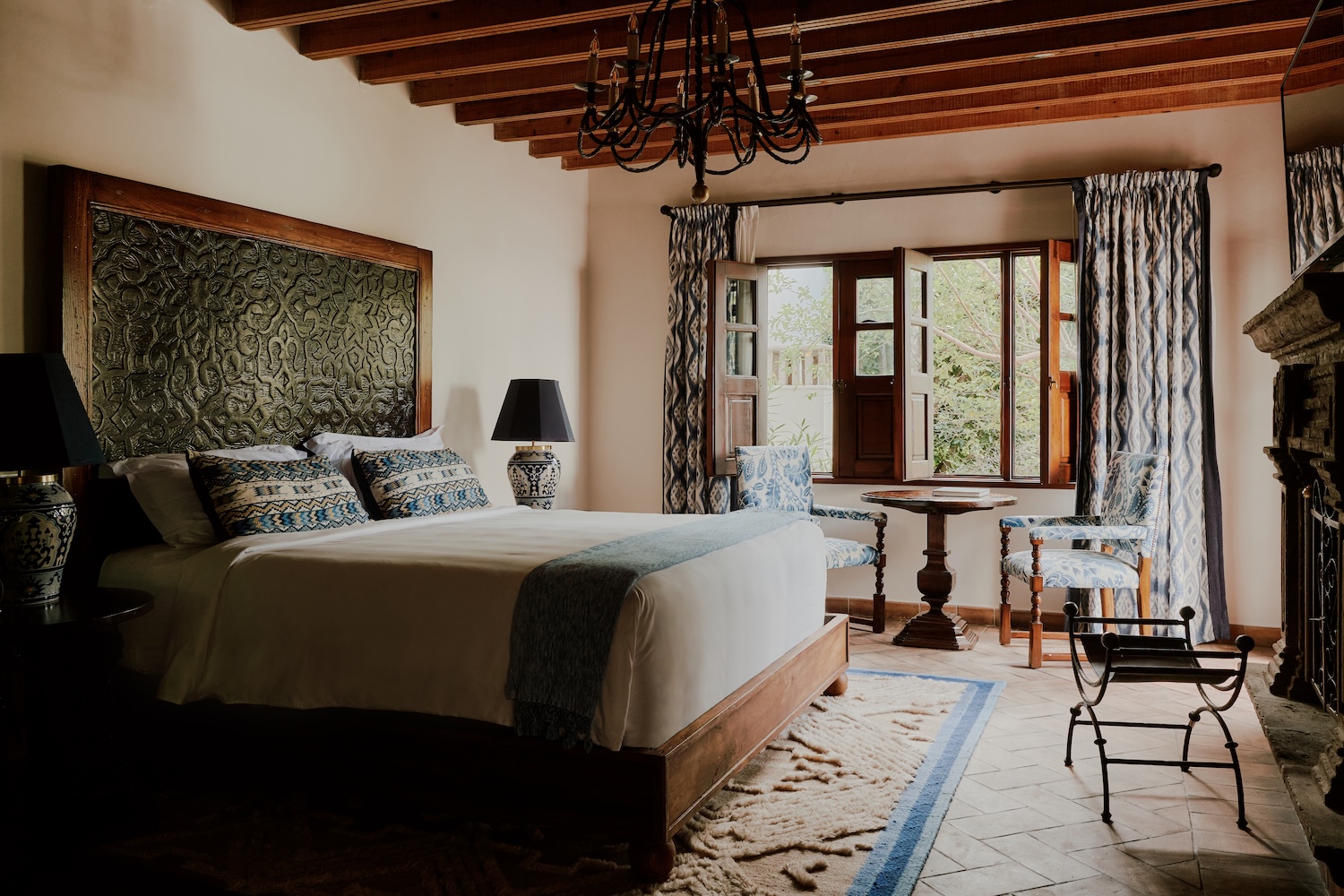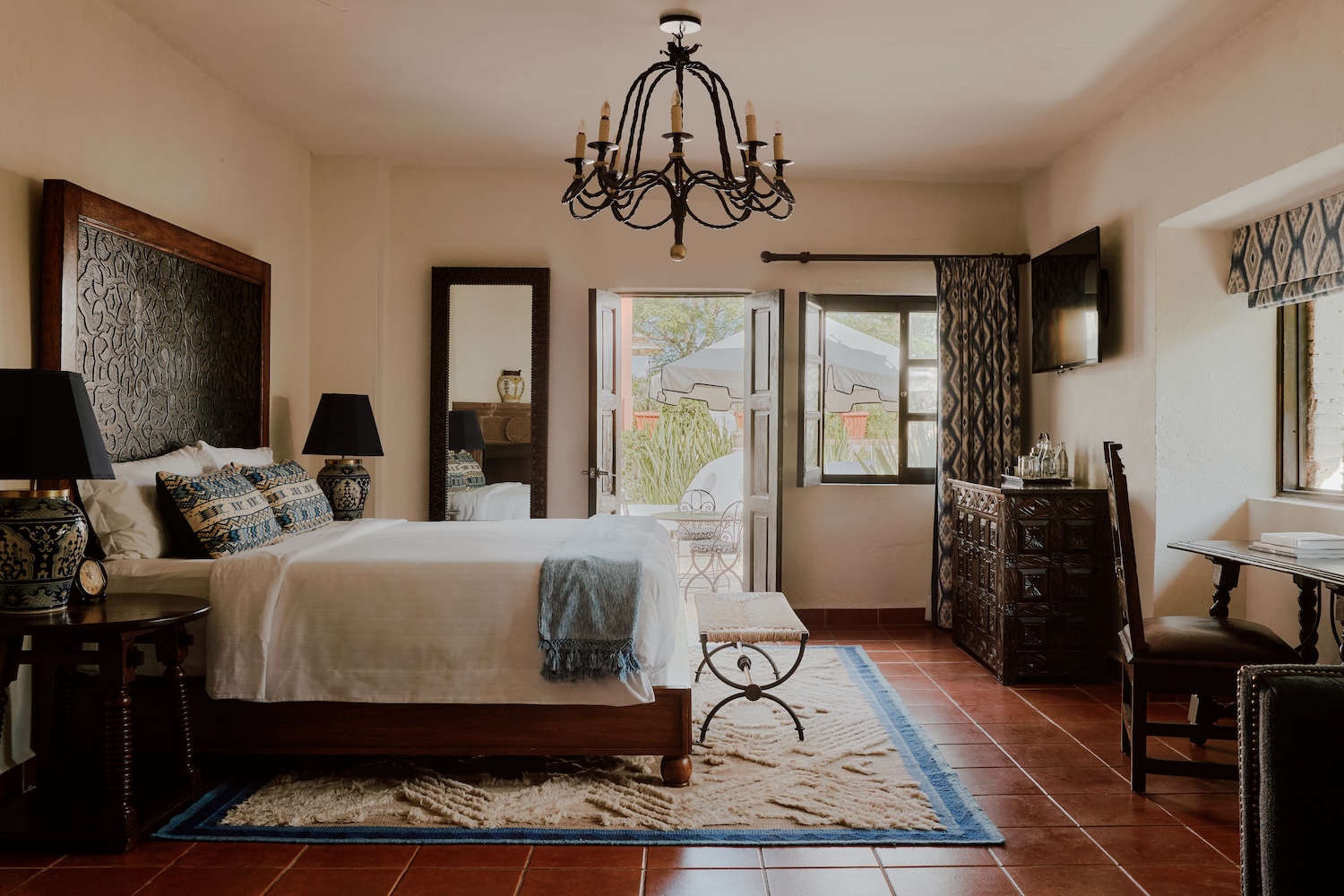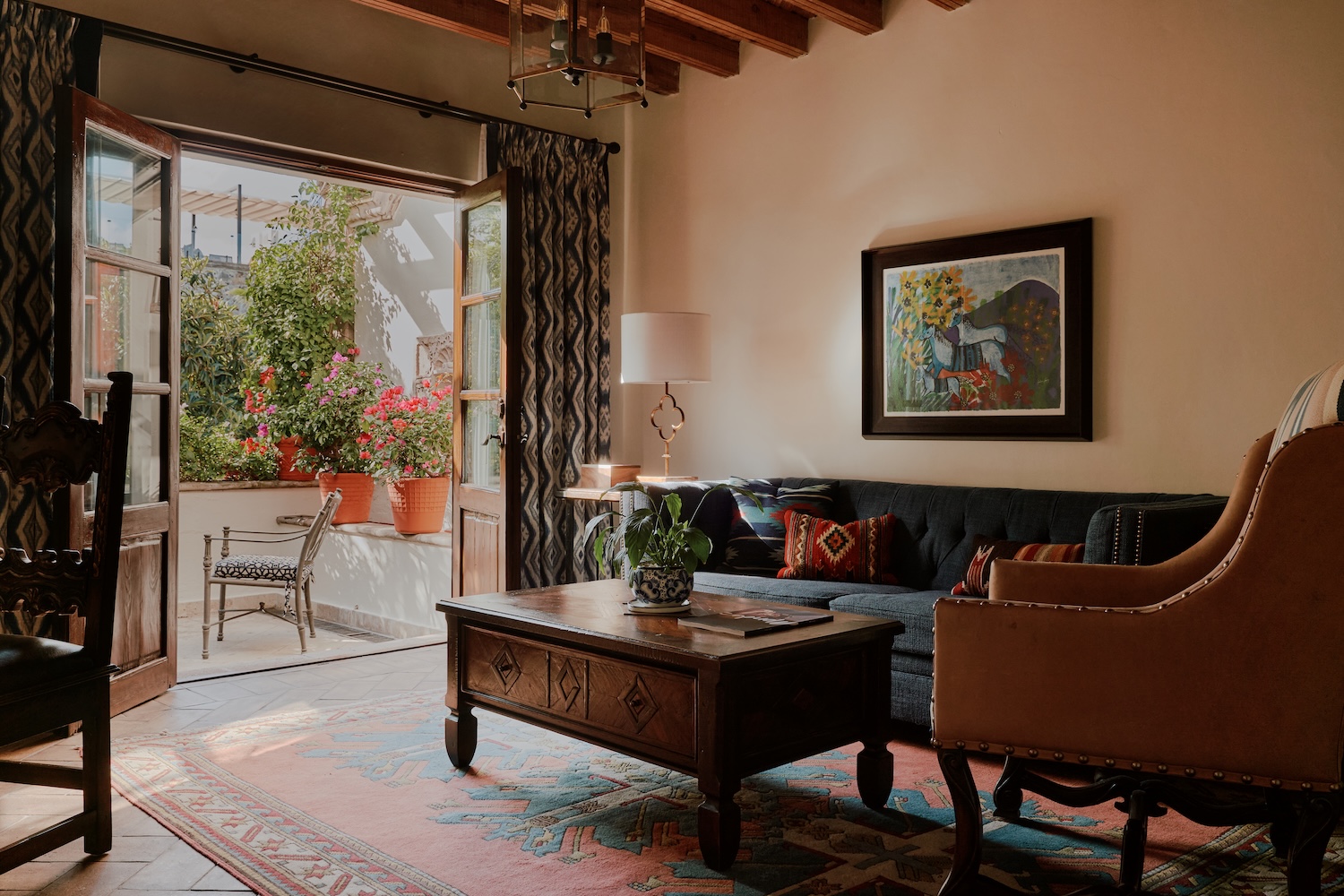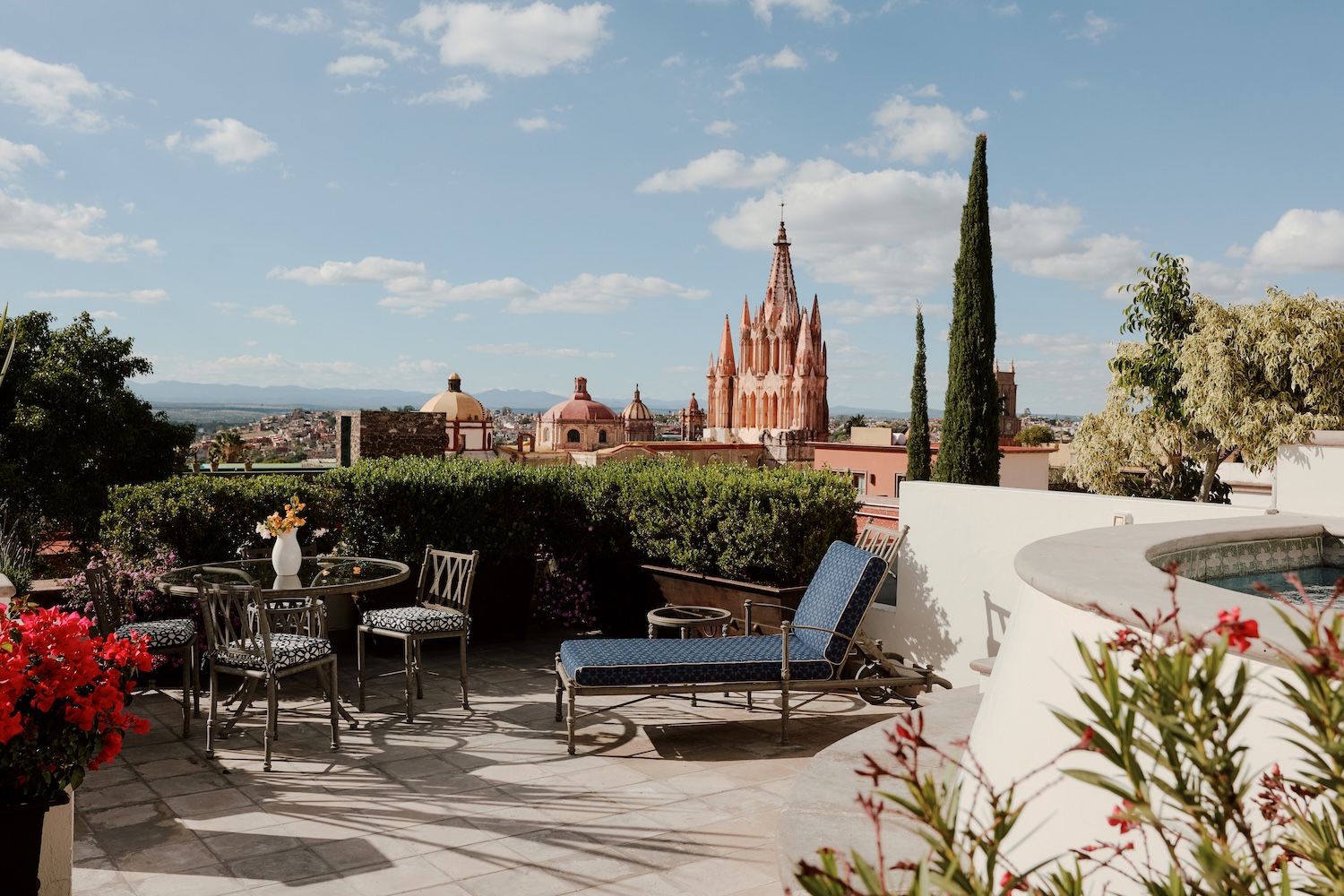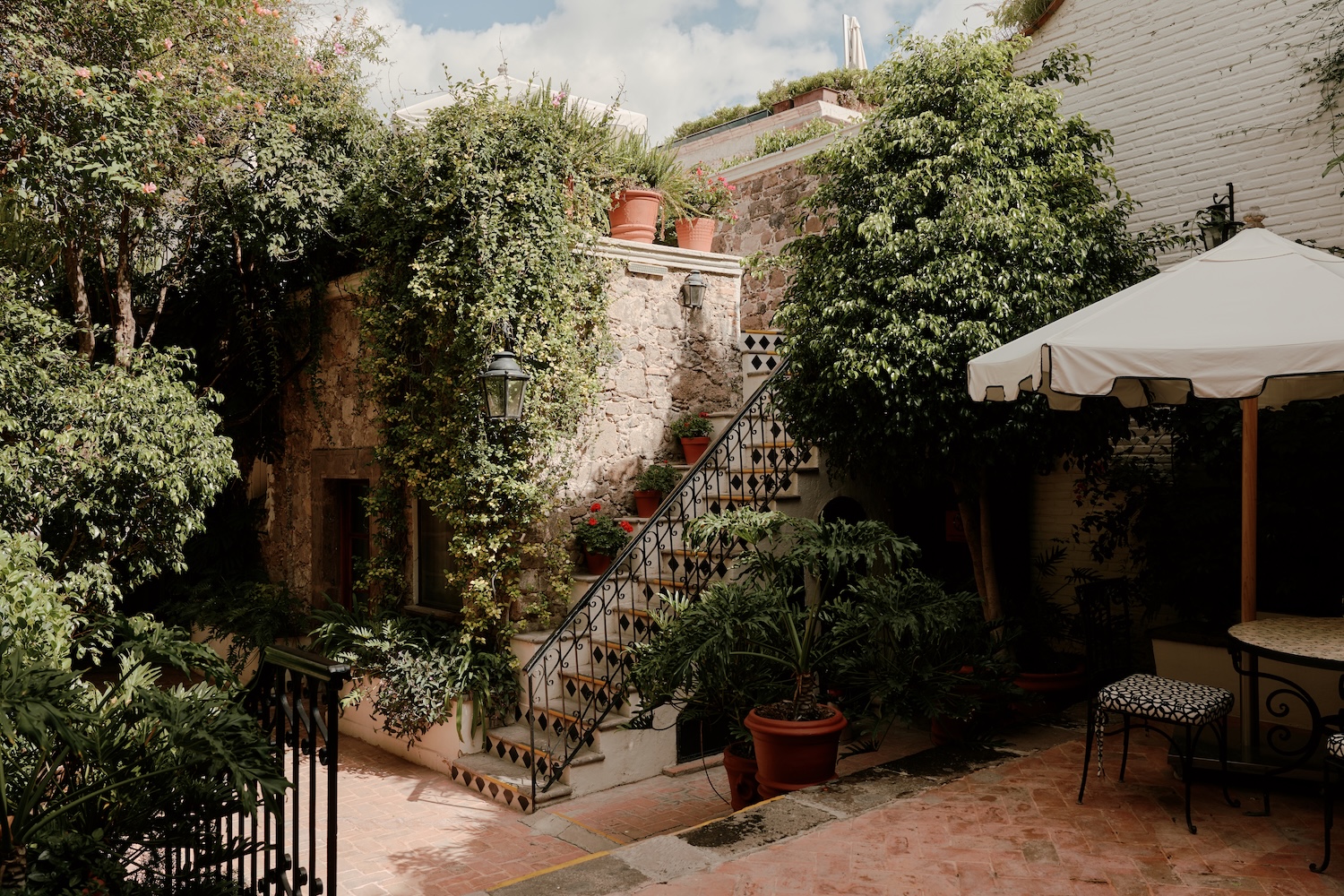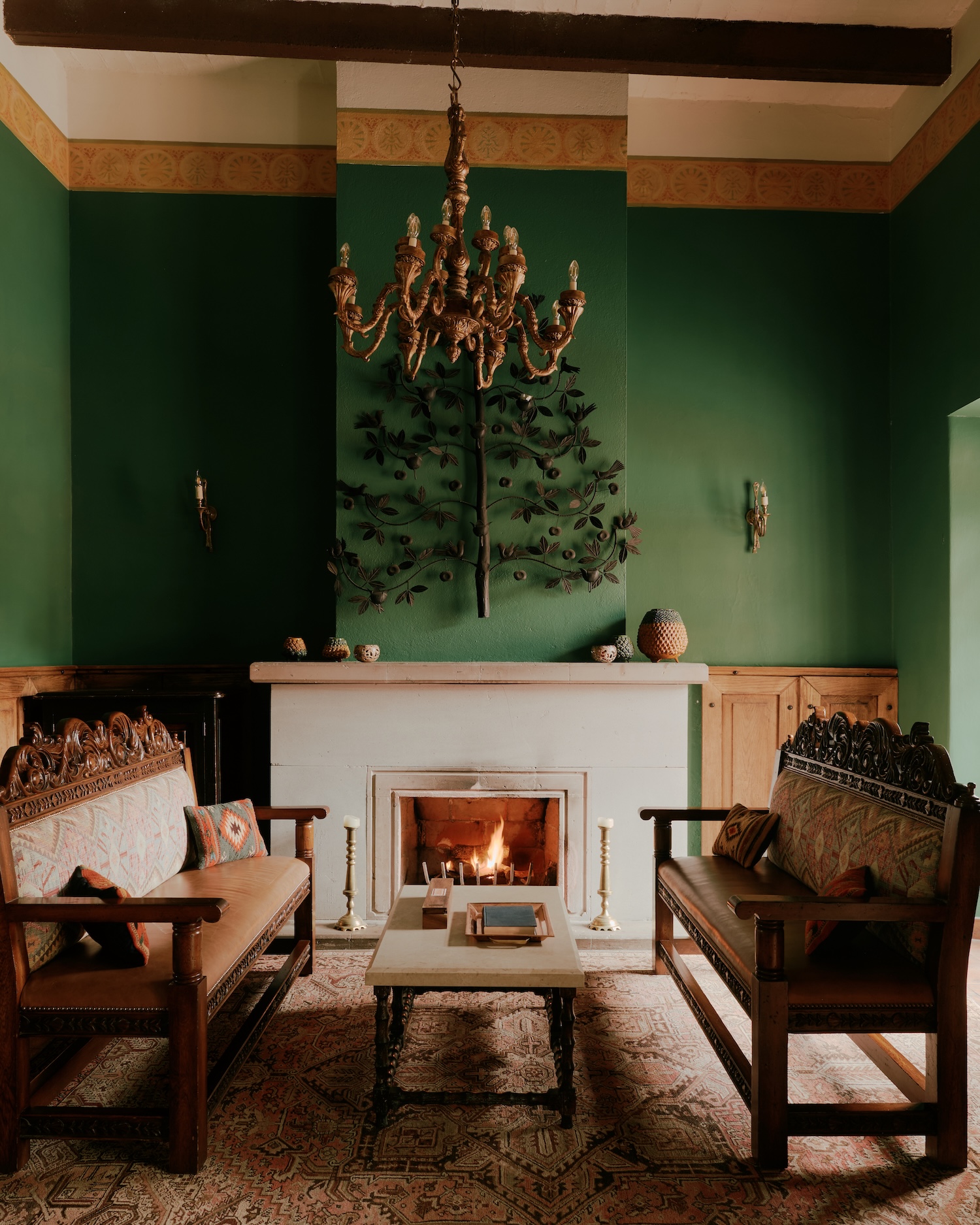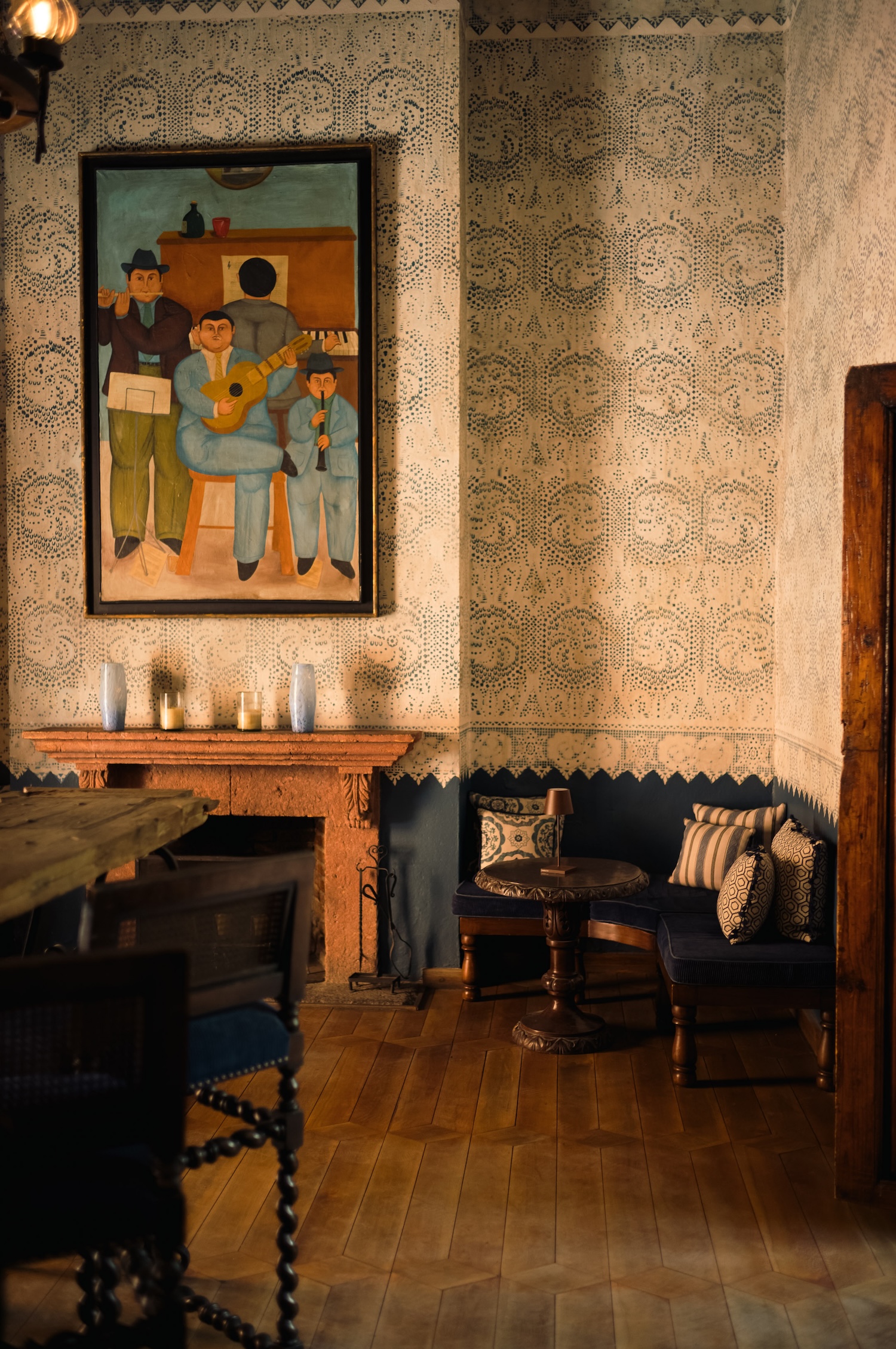Casa de Sierra Nevada, A Belmond Hotel is a luxury hotel located in San Miguel de Allende, designed by Trisha Wilson who oversaw the renovation and restyling of all 37 rooms and suites. The hotel’s design philosophy emerges from a profound respect for material authenticity. Across six restored colonial mansions dating from the 16th to 18th centuries, the interiors reveal a masterful dialogue between preservation and contemporary comfort. The original stucco walls, with their characteristic lime-based plaster, bear the irregular textures that only hand application can achieve. These surfaces, built up in layers over generations, create an almost textile-like quality that machine production cannot replicate.
The furniture selection demonstrates particular sensitivity to regional craft traditions. Hand-carved pieces throughout the property showcase the distinctive woodworking techniques of central Mexico, where indigenous methods merged with Spanish colonial influences. The result is a hybrid aesthetic – robust joinery techniques supporting forms that speak to both European refinement and pre-Columbian geometric sensibilities. Each piece functions as both utilitarian object and cultural artifact, embodying what craft historian Tanya Harrod calls “the democracy of making.”
What elevates Casa de Sierra Nevada beyond mere historical preservation is its integration of contemporary Mexican artists and craftspeople. The hotel’s commitment to showcasing striking contemporary art reflects San Miguel de Allende’s evolution as a creative hub, where traditional techniques find new expression. This approach mirrors broader movements in Latin American design, where makers are reclaiming indigenous materials and methods while addressing contemporary spatial needs.
The architectural restoration process itself becomes a form of craft practice. Preserving vaulted archways and wood-beamed ceilings required specialists versed in historical construction techniques – knowledge passed down through generations of Mexican builders. The lighting design particularly demonstrates this sensitivity, with fixtures that honor the buildings’ colonial proportions while providing modern illumination standards.
